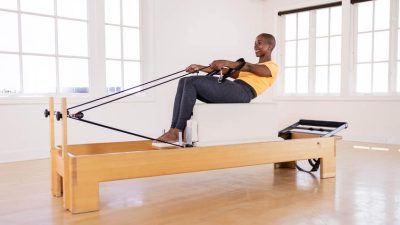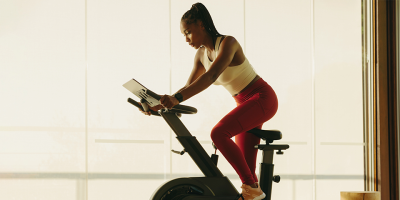
Watch the #PilatesHour webinar “Neuro-Concepts in Pilates” with Brent Anderson PT, PhD, OCS, NCPT, and Kate Strozak MSc Applied Neuroscience, LMT, NCPT.
Neuroplasticity
KS: Neuroplasticity is a term that you are probably hearing a lot about. With ample new funding for neuroscience, there has been a lot about the study of neuroplasticity and how to best support its process.
Neuroplasticity is the nervous system forming, adapting, or reorganizing in terms of its structure and function. Neuroplasticity describes the actual structural changes that can occur to a brain when it comes to learning and adapting. It also refers to brain function and how we relay and communicate information “out” from the brain. Neuroplasticity occurs throughout all stages of life however it certainly seems to slow down with age. That’s not to say it doesn’t continue to happen. The process can become a bit slower or require increased thoughtfulness to facilitate.
Until around the age of 25, humans are very wired to learn. It’s like giving water to a sponge. You can soak things in and you don’t really have to put much thought, attention, and focus on it. Past 25, in the way that our bodies are evolving through age, we benefit from harnessing factors like attention, focus, and sleep.
Sleep is particularly important in supporting neuroplastic changes in the brain.
There’s all this excitement about neuroplasticity, “oh we’re going to work on your neuroplasticity today! You are changing your brain by learning all of these things”! But neuroplasticity doesn’t exclusively describe what you might think of as a “positive” process of learning things. Neuroplasticity also includes and encompasses maladaptive processes. When we develop compensations or when we have traumatic experiences in our life, that’s also neuroplasticity. It’s good to be aware that there is much more to it than just “learning new things” for fun or for efficiency.
BA: This reminds me of our conversation about centralized pain with Adriaan Louw. Not the peripheral pain of a message coming in and the brain protecting, but a centralized pain pattern. This is exactly what you’re talking about Kate. In this case, it is neuroplasticity in the “negative” way that creates a circuit of pain that gets stimulated by many different things. From emotions, touch, proprioception, and temperature, any of these can facilitate or trigger a response now that it’s been hard-wired.
As Pilates teachers, our goal is to create positive movement experiences that don’t have pain. And doing this with the intention of rewiring that poorly wired circuit that we refer to as centralized pain. What are your thoughts on that? What are we able to facilitate as Pilates instructors in terms of neuroplasticity? How do we do this in the one or two hours a week we have with our clients?
KS: We will do this by giving new experiences, and very importantly, by challenging people. It cannot work by keeping people in their comfort zone.
There is of course a time and a place for moving within a comfort zone. Maybe you are trying to establish rapport or get someone comfortable and familiar with the movement. Eventually, you have to take them to that point where they are being challenged and they are exerting. You see this intense focus on their faces and the sweat beads starting to drip! So that’s a really key thing you can start to integrate as a movement professional now.
Neurogenesis
Neurogenesis is the idea that our brains actually create new neurons. I grew up believing that once you damage a brain cell or a neuron it’s gone forever, so good luck! But this is actually not the case. Evidence is suggesting that neurogenesis does occur throughout life. It’s a process that slows as we get older, which makes a lot of sense if you think of a newborn.
Newborn brains are just incredible in how much neuronal growth they are going through and synaptic connections they are building. Children go through this until about the age of three when you see this rapid increase of neurons, neuronal size, and connections forming. Around the age of three, they enter a state of “pruning” or cell death (but pruning sounds much better), where you see those communications simplify and streamline. This makes a lot of sense if you are around, say, three-year-olds and what they are going through behaviorally and developmentally.
100 Billion Neurons
Even though it most profoundly occurs at that early stage in life, neurogenesis is something that occurs throughout life. There is a lot of excitement about neuroplasticity, and neurogenesis and this is good news, but it is relatively small. If we have 100 billion neurons in an adult brain, neurogenesis accounts for about 700 new neurons added per day in the hippocampus part of the brain. There are similar factors to neuroplasticity that support neurogenesis such as sleep, exercise, learning, nutrition, and play. The play aspect encompasses the challenge component of neuroplasticity. Attention and focus can also support the process of neurogenesis.
BA: When you’re looking at 100 billion neurons, 700 new neurons per day is not a whole lot. The idea of genesis – we have angiogenesis where our arteries and capillaries regenerate as well as peripheral nerve regeneration. We have known this for a long time, and you have to create the demand for the peripheral nerve to regenerate.
It makes sense that there would be regeneration in the central nervous system. I think the challenge we have is finding the data to show how that works. Perhaps looking at the difference between something like a central pattern generator in a cat versus in a human. It would be interesting to look at research trying to activate those in people who have had a spinal cord injury. Maybe using stem cells to be able to speed up the neurogenesis inside the brain and the spinal cord. Either way, if it’s exogenous or endogenous, I think we are going to figure it out. It is an exciting time to be involved in neuroscience.
KS: We know IQ can change. It is not a fixed measurement. We now know that we can grow new neurons. It is amazing the things we can do as humans.
Watch #PilatesHour Episode 120 “Neuro-Concepts & Pilates” and Join us Thursdays at 3 PM eastern and participate live with Brent and special guests: #PilatesHour Live!







